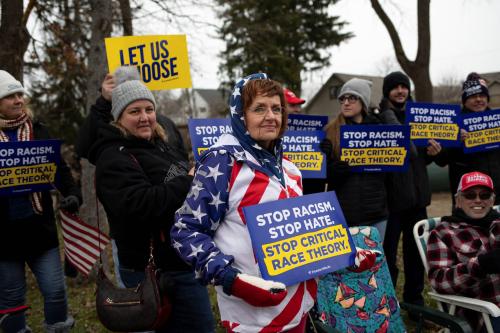INTRODUCTION
In the spring of 1994, a lifelong professional dream came true when I was selected as president and CEO of the National Urban League. Founded in 1910 and composed of more than 100 local affiliates across the United States, the Urban League is the oldest and largest community-based movement devoted to empowering black Americans to enter the economic and social mainstream.
Convinced throughout my career that education is key to reaching and remaining in the American mainstream, I was determined to make the promotion of academic achievement the centerpiece of my tenure at the Urban League. I knew that far too many black kids, not to mention other minority and low-income students, were lagging behind academically. And I knew that this so-called achievement gap threatened to hold these children back in school and throughout their lives. But to be truthful, beyond zeroing in on this achievement issue, I didn’t yet have a game plan for how the Urban League might leverage its distinctive history and organizational strength to do something about the problem.
When I was in law school, my professors frequently invoked the phrase caveat emptor, which means “buyer beware.” In the spirit of that phrase, I should alert readers of this book that I am not a professional educator. Although I have dabbled over the years in teaching seminars at the undergraduate and law school levels, I have never taught in a K–12 classroom, let alone run a school. So my perspectives and recommendations should be read and weighed with that point in mind.
Nevertheless, I am not a stranger to the issues and imperatives facing K–12 education in the United States. As a senior city administrator in New Haven, Connecticut, I spearheaded the substantial expansion of after-school programs in schools and youth services agencies. I once covered education as an editorial writer with the New York Times. From 1988 through 1994, I served as vice president of the Rockefeller Foundation, where I helped conceive and launch the National Commission on Teaching and America’s Future and the National Guard Youth ChalleNGe Corps, a five-month, quasi-military program aimed at turning around the lives of teenagers who have dropped out of school. On a more personal side, my wife and I are the parents of three daughters, and we interacted extensively with the public schools that educated them. While in law school, I served as a social group worker and mentor for a half-dozen adolescent boys who had frequently been in trouble with the law. Finally, as I’m fond of telling young people in audiences where I’m speaking, I am a “retired kid” with vivid memories of what it was like growing up. Thus, as I embarked on setting the agenda for my administration at the National Urban League, I approached the task, if not as a seasoned educator, from the multiple vantage points of a parent, mentor, journalist, philanthropist, advocate, and (I would like to think) innovator who passionately wants children to succeed in school and schools to succeed by children.
On the eve of my taking office as CEO, a startling article in the Wall Street Journal caught my eye. The author, Ron Suskind (1994), describes how high achievers like Cedric Jennings at Ballou High School in Washington, D.C., were so intimidated by their peers that they refrained from attending a school assembly to receive the scholastic honors awards they had earned. Suskind subsequently received a Pulitzer Prize for this riveting story, which he transformed into the acclaimed book A Hope in the Unseen: An American Odyssey from the Inner City to the Ivy League. Here is a look at how Suskind describes Cedric’s experience:
On a recent afternoon, a raucous crowd of students fills the gymnasium for an assembly. Administrators here are often forced into bizarre games of cat and mouse with their students, and today is no exception: To lure everyone here, the school has brought in former Washington Mayor Marion Barry, several disc jockeys from a black radio station and a rhythm-and-blues singer.
A major reason for the assembly, though, has been kept a secret: To hand out academic awards to top students. Few of the winners would show up voluntarily to endure the sneers of classmates. When one hapless teen’s name is called, a teacher must run to the bleachers and order him down as some in the crowd jeer “Nerd.”
The announcer moves on to the next honoree: “Cedric Jennings! Cedric Jennings!” Heads turn expectantly, but Cedric is nowhere to be seen. Someone must have tipped him off, worries Mr. Ballard (the assistant principal). “It sends a terrible message,” he says, “that doing well here means you better not show your face.”
Cedric, at that moment, is holed up in a chemistry classroom. He often retreats here. It is his private sanctuary, the one place at Ballou where he feels completely safe, and where he spends hours talking with his mentor. . . . Cedric later will insist he simply didn’t know about the assembly—but he readily admits he hid out during a similar assembly last year even though he was supposed to get a $100 prize: “I just couldn’t take it, the abuse.” (1994, paras. 11–14)
As I read the article, I kept muttering to myself, “This is utterly unacceptable. We just can’t have this. We must not let our children turn their backs on academic achievement.” Suskind’s article was an epiphany because it helped crystallize for me where the Urban League movement might fit into this picture and what it potentially could do about that so-called achievement gap.
Harking back to the famous opening of the hit TV show Mission: Impossible, the Urban League’s assignment—which I believed we had no choice but to accept—was to mobilize communities to help students succeed. I increasingly became convinced that our job was to galvanize communities to create a pervasive culture of achievement that celebrates and, yes, provides protective cover to achievers, that neutralizes negative peer pressures, and that endeavors to motivate youngsters who scorn academic achievement.
Most of the energy in the contemporary push to improve K–12 schools, boost scholastic performance, and close stubborn achievement gaps is concentrated on accountability and testing, governance and management, curriculum and instruction, strengthened teaching, and school redesign. This is true from the classroom to city hall, from state capitols to the White House. These initiatives unquestionably have merit and appear to be making a positive difference. Yet the persistently poor scholastic performance of far too many youngsters confirms that these measures are not sufficient.
Many a thoughtful article and book has been written about the best ways to improve education and public schools in particular. Numerous experts and observers have weighed in about the obvious importance of parents and caregivers, and I certainly said my piece on this subject in my book Achievement Matters: Getting Your Child the Best Education Possible (Price, 2002). What’s surprising, though, is how little attention has been paid to the responsibility and potential role of the community in fostering academic achievement. Instinct, experience, observation, and research all convince me that these wider social structures can play an indispensable part in promoting literacy and achievement.
This book is written for educators who wish to mobilize their own communities to support student success. It addresses an important gap in the multifaceted strategy that school superintendents, principals, education leaders, and practitioners should pursue in partnership with community groups to maximize their chance of boosting student achievement, especially among those young people who tend to be the hardest to reach and teach. My aim is to provide vivid illustrations of what can be done based on what has actually been done and to share other promising ideas worth trying. I also hope to pass on concrete, real-world tips for implementing a community mobilization effort.
Because my own professional expertise and the examples I cite are rooted in the U.S. experience and, even more specifically, in the experience of minority-majority urban schools, this book will resonate most obviously with U.S. audiences. Yet the fundamental message is not confined by ethnicity or economic status, much less by oceans or national boundaries. Nations around the world contain cities and rural regions with high concentrations of underachieving and unmotivated young people who are at risk of losing hope. It is my hope that this book will prove helpful to educators and community leaders who are determined to boost these youngsters’ academic performance and life prospects.
During 2006–2007, I proudly served as cochair of the Commission on the Whole Child. It was established by the Association for Supervision and Curriculum Development (ASCD) out of the firm conviction that the success of each learner can be achieved only through a whole child approach, and that teachers, schools, and communities need to forge a new compact based on shared responsibility for the effective education and healthy development of children. The Commission’s report, The Learning Compact Redefined (ASCD, 2007), calls on communities to provide
• Family support and involvement;
• Government, civic, and business support and resources;
• Volunteers and advocates; and
• Support for their districts’ coordinated school health councils or other collaborative structures (p. 3).
With this book I want, in poker parlance, to call and raise the Commission’s recommendations. The real-world experiences captured in this book convince me that well-organized communities working in sync with schools and educators can do even more to stoke students’ desire for achievement. A thoughtfully designed and faithfully executed campaign to motivate youngsters to succeed in school creates a “win–win–win,” for educators, for students, and for entire nations— present and future.
To purchase a copy of Mobilizing the Community to Help Students Succeed please visit the
ASCD website
.



Commentary
Mobilizing the Community to Help Students Succeed
August 26, 2008